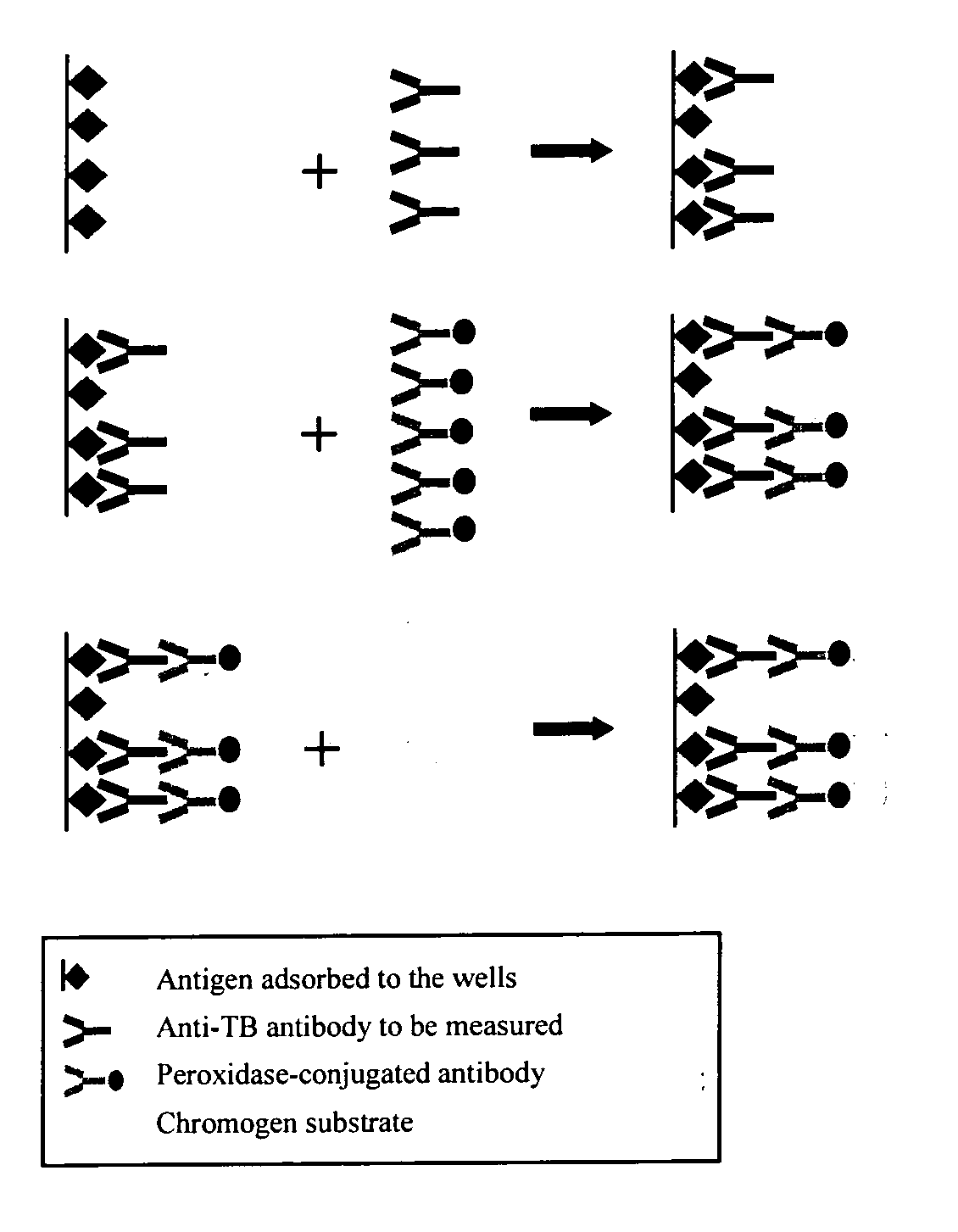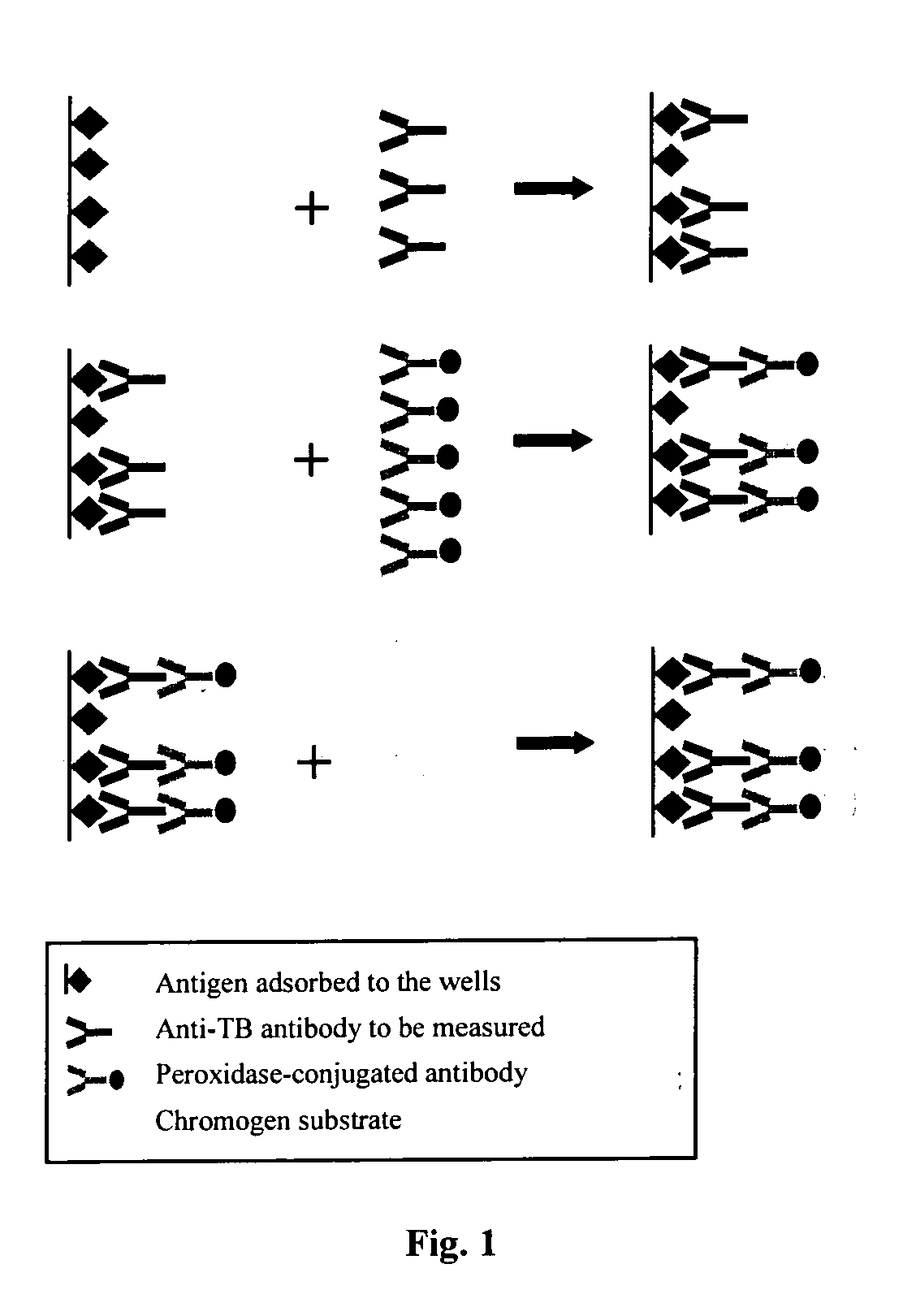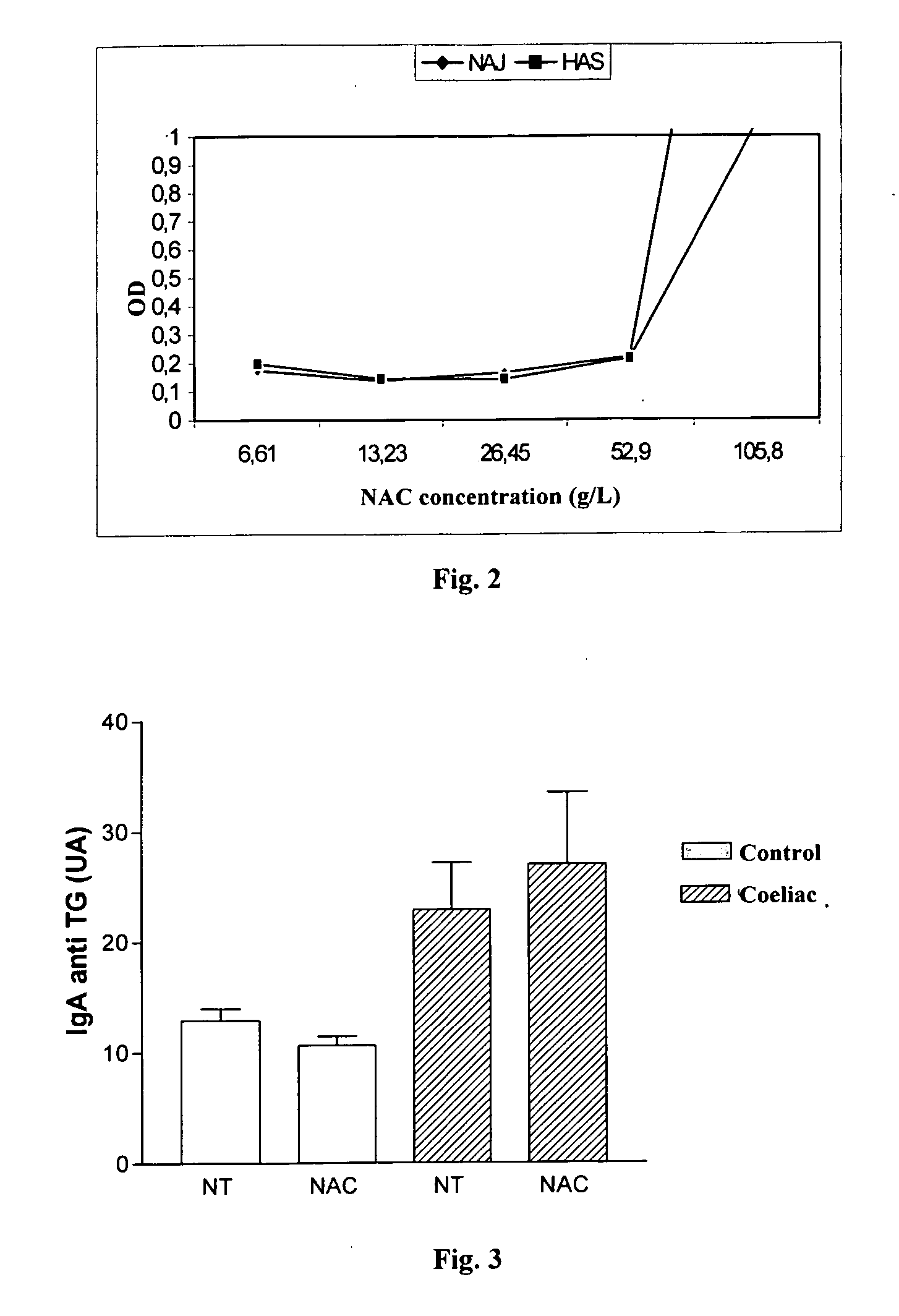Method for Detecting Anti-Transglutaminase Antibodies
a technology of transglutaminase and anti-transglutaminase, which is applied in the field of detection of anti-transglutaminase antibodies in saliva, can solve the problems of lack of specificity of such tests, low reliability of diagnosis tools when used on their own, and difficult diets to follow, so as to reduce the non specific binding of samples, increase the detection effect, and increase the signal
- Summary
- Abstract
- Description
- Claims
- Application Information
AI Technical Summary
Benefits of technology
Problems solved by technology
Method used
Image
Examples
example 1
1. Materials and Methods
Samplings
[0051] The tests are performed on saliva samples, collected by using Omni-SAL® salivettes. The collecting pad of the salivette is placed under the tongue until the indicator turns blue. The impregnated pad is then put back inside a tube containing a conservation liquid buffered to neutral pH and the saliva is extracted with the help of a filter of the piston type. The saliva is aliquoted and frozen to −80° C. The anti-transglutaminase ELISA concept The anti-transglutaminase ELISA concept is schematically depicted in FIG. 1.
[0052] The transglutaminase antigen either, purified from Guinea pig kidney (a proprietary process), or human recombinant (Celikey™ PHARMACIA Diagnostics) was adsorbed onto the wells of a microtitration plate. During a first incubation, the anti-transglutaminase antibodies possibly present within the samples are bound to the transglutaminase in the solid phase. After washing, a second incubation allows a peroxidase labeled huma...
example 2
Confirmation of the Positive Effect of the NAC Based Treatment on a Larger Number of Samples
[0104] The discrimination between patients with coeliac disease and healthy control subjects was evaluated: [0105] according to whether the saliva samples were or not NAC treated [0106] by testing the salivas from 15 non-treated patients with coeliac disease and from healthy control 25 subjects [0107] by collecting all the salivas on salivette.
[0108]FIGS. 7 and 8 represent graphs comparing the level of anti-TG IgA in both non-treated and treated with N-acetyl-cystein salivas from healthy control subjects (FIG. 7) and non-treated patients with coeliac disease (FIG. 8). The results illustrated in FIGS. 7 and 8 show that the effect of NAC is very important on the control salivas, decreasing in a significant manner (P=0.0038) the values obtained for the control salivas. This allows to decrease the value selected as a “cut-off” value for determining that a saliva sample contains anti-TG IgAs. As...
PUM
 Login to View More
Login to View More Abstract
Description
Claims
Application Information
 Login to View More
Login to View More - R&D
- Intellectual Property
- Life Sciences
- Materials
- Tech Scout
- Unparalleled Data Quality
- Higher Quality Content
- 60% Fewer Hallucinations
Browse by: Latest US Patents, China's latest patents, Technical Efficacy Thesaurus, Application Domain, Technology Topic, Popular Technical Reports.
© 2025 PatSnap. All rights reserved.Legal|Privacy policy|Modern Slavery Act Transparency Statement|Sitemap|About US| Contact US: help@patsnap.com



